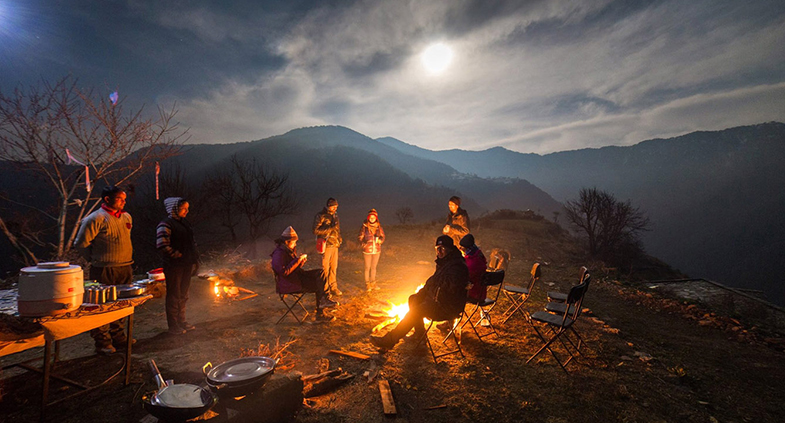The Nag Tibba Trek is a beautiful hike near Mussoorie that provides hikers with a stunning view of the Himalayas. It is a perfect getaway for those who are looking for adventure and a chance to experience the beauty of the mountain range up close. Not only does Nag Tibba offer breathtaking views, but the trek is also a great way to escape from the hustle and bustle of city life. With this blog post, we will be providing you with a detailed itinerary for the Nag Tibba trek, as well as a breakdown of the best time to visit. We will also be providing tips and tricks to make the most out of your experience, including what to bring and how to prepare for the trek
Highlights of our Nag Tibba Trek trip
Nag Tibba Trek is one of the most popular trekking destinations in India due to its unique combination of stunning views, challenging terrain, and local culture. It is located in the Garhwal Himalayas and is part of the less-explored region of Uttarakhand. The trek is best undertaken from May to October when the weather is pleasant and the skies are clear.
The highlights of a Nag Tibba trek include a visit to the local villages, a challenging trek over snow-capped peaks, and some of the most beautiful views of the Himalayan range. The trek starts from Pantwari, which is a small village located at the base of the trek. Trekkers will then make their way to the Nag Tibba summit, which stands at an elevation of 3022 meters. Along the way, trekkers will be able to spot snow-capped peaks such as Trishul, Nanda Devi, and Kedarnath.
During the trek, trekkers will also have the opportunity to meet and interact with the local villagers. These friendly people will be more than willing to share stories about their culture and way of life. At the top of the summit, trekkers will be rewarded with panoramic views of the Himalayan range, including Bandarpunch, Panchachuli, and the Ganges valley.
Nag Tibba Trek is a great way to explore the stunning beauty of the Himalayas and experience the unique culture of the region. Trekkers should be prepared to tackle some challenging terrain and bring along the necessary equipment and supplies. With the right planning, this is a rewarding and unforgettable experience.
Best Travel Times for the Nag Tiva Trek
The best time to visit the Nag Tibba Trek is between April and November. During these months the weather is generally warm and the trails are in their best condition. The temperature during these months is usually between 10 to 25 degrees Celsius. During the summer months, the temperature can reach up to 35 degrees Celsius.
April and May are the best months to visit the trek as the skies are relatively clear and the temperatures are mild. During this time, the trail is relatively dry, making it ideal for hikers. The monsoon months of June to September are not advisable as the trails are often slippery and wet due to the rains.
October and November are also great months to embark on the trek as the skies are clear and the terrain is dry. The temperatures during this time are around 10 to 15 degrees Celsius, making it ideal for trekking.
The Nag Tibba Trek is an ideal destination for adventure seekers and nature lovers alike. Regardless of the time of year, you decide to embark on the trek, make sure to come prepared with the necessary supplies and equipment.
Where is nag tibba located?
Nag Tibba is situated in the Garhwal region of the lower Himalayas and is the highest peak in the region. It is located within the Tehri-Garhwal district of Uttarakhand, India, and stands at an elevation of 3022 m (9917 ft).
The trek to Nag Tibba is one of the most beautiful, yet challenging, treks in the Himalayas. The trek offers incredible views of the majestic Himalayas and a chance to explore the lush forests, snow-covered mountains, and alpine meadows. The trail takes you through dense oak and deodar forests, past several hidden waterfalls and streams, and eventually to the summit of Nag Tibba.
The best time to visit Nag Tibba is between April and June when the weather is mild and the days are long. During this time, the trekking trails are free of snow and the terrain is relatively easy to traverse. July to September is the monsoon season, so it is advised to avoid trekking during this time. October to February is the winter season and the snow-covered trails can make the trek difficult.
Overall, the Nag Tibba trek is perfect for those looking for a challenging yet rewarding experience in the Himalayas. The trek is a great way to get a taste of the Himalayan landscape and experience the beauty of the Garhwal region.

